New York Times
New York Times: 650 Prompts for Narrative and Personal Writing [Pdf]
A wonderful collection of 650 writing prompts organized into categories and issues, e.g., role models, family, memories, race, gender, sexuality, social media, etc. Each prompt is linked to an article on that topic. W.9-10.10 Write...
Texas Education Agency
Texas Gateway: Development of Characters Through Literary Devices
In this lesson, students learn how writers develop characters through a variety of techniques: narration, dialogue, interaction with other characters, interaction with setting, and characters' thoughts. RL.9-10.3 Analyzing Characters,...
Georgia Department of Education
Ga Virtual Learning: Contemporary Literature: Rhetorical Landscape
This is an introduction to a unit on the use of rhetoric in speaking or writing to persuade an audience to the desired way of thinking or action. If focuses on rhetorical techniques and the three audience appeals: ethos, pathos, and logos.
Texas Education Agency
Texas Gateway: Generate Ideas and Questions
This lesson focuses on the writing in high school. Whether you write expository and persuasive essays or short stories, your first steps are to determine and define your audience. After that, you will begin to generate ideas and...
Texas Education Agency
Texas Gateway: Understanding Literary Text: Point of View and Tone
[Accessible by TX Educators. Free Registration/Login Required] A learning module that teaches students about point of view and tone in six mini-lessons: Introduction, Reviewing Point of View and Tone, Unreliable Narrators, Third-Person...
Thinkport Education
Thinkport: Read Like This, Too Central Ideas and Supporting Details
Begin practicing skills that will help identify the central idea and details while reading literary nonfiction.
Thinkport Education
Thinkport: Change the View: Retell a Narrative Through Different Eyes
Read a short story by Kate Chopin titled "The Story of an Hour." Review the elements of a narrative and the point of view of the narrator. Then, create the final product of the module, a narrative written from a different point of view.
Texas Education Agency
Texas Gateway: Write Literary Text That Develops Interesting Characters
A learning module that teaches students how to write an literary text with good characterization in four lessons: Introduction, Two Types of Characterization and Two Types of Characters, Choosing Your Characters, and Your Turn.
Texas Education Agency
Texas Gateway: Writing Literary Text With an Engaging Story Line
A learning module that teaches students how to write an engaging literary text in six lessons: Introduction, The Narrative Hook, Setting, Conflict, Plot, and Ending.
Texas Education Agency
Texas Gateway:writing an Engaging Story With Literary Strategies to Enhance Plot
A learning module that teaches students about writing a short story with a strong plot in seven mini-lessons: Introduction, Choose the Point of View, Figure Out What to Say, Suspend Readers in Midair, Write about a Central Theme, Read A...
Texas Education Agency
Texas Gateway: Writing a Short Story With Interesting and Believable Characters
A learning module that teaches students about writing a short story with believable characters in six mini-lessons: Introduction, Imagine 3-D Characters, Show and Tell, Build Your Main Character Read about a Main Character, and Draft...
Texas Education Agency
Texas Gateway: Writing a Short Story With Well Developed Conflict and Resolution
A learning module that teaches students about writing a short story in six mini-lessons: Introduction, Understanding the Essence, Getting an Idea, Structuring Plot, Building Conflict, and Outlining Your Own Story.
National Endowment for the Humanities
Neh: Edsit Ement: Introducing the Essay: Twain, Douglass and American Non Fiction
This lesson plan serves as an introduction to American literary non-fiction writing and focuses primarily on teaching some basic approaches to recognizing rhetorical strategies adopted for persuasive effect in essays and non-fiction. The...
Writing Fix
Writing Fix: The Sum of Its Parts
Inspired by Julianna's understanding (from the novel Flipped by Wendelin Van Draanen) that "A painting is more than the sum of its parts," students will describe a memorable place that evokes a certain feeling or emotion. Students will...
Writing Fix
Writing Fix: Problem Solving [Pdf]
A graphic organizer students can use to think about or solve a problem from three different points of view. A blank copy and a completed sample are both provided.
Writing Fix
Writing Fix: A Picture Book Writing Lesson: Start With What Isn't There
In this lesson, students will describe a setting, attempting to set a mood for their readers in two paragraphs. Borrowing a technique from Stephen Kramer's two-page introduction to Caves, they will begin with a paragraph that explains...
Writing Fix
Writing Fix: Creating a Second Person Choice Story
This lesson is designed to help students understand plot dimensions and literary devices while writing a multi-faceted short story that has many possible outcomes. For inspiration, students will analyze songs that tell stories for both...
Writing Fix
Writing Fix: A Chapter Book Writing Lesson: Creating a Parallel World
Inspired by the opening events in The Subtle Knife by Philip Pullman, young scholars are asked to create an original parallel world that is similar to ours but different in certain ways. They will focus on the similarities and...
Writing Fix
Writing Fix: A Small Moment With an Important Person
A writer's workshop idea where students brainstorm a list of people who are important to them as well as one or two times they remember being with each person. Students then use these ideas to write about a small moment with someone who...
Smithsonian Institution
Smithsonian Education: Telling Your Story
A lesson in which students gain empathy for people who lived during a historical time period by writing a first-person story with experiences that would have happened during that time.
University of Victoria (Canada)
The U Vic Writer's Guide: Literary Term: Point of View
From the University of Victoria's writing tutorial site, this section provides a multiple-paragraph discussion of point of view.
Houghton Mifflin Harcourt
Holt, Rinehart and Winston: Elements of Literature: Narrator Chart [Pdf]
Provides an overview of the importance of a narrator in a text and some brief exercises for analysis. Helps students learn more about the role of the narrator in literature, his/her voice, and influence on other characters and events.
Writing Fix
Writing Fix: Counting Up or Down Stories
The writer will brainstorm situations where individuals or people in a group count up or count down out loud together. Using the ending of chapter 5 of Wringer by Jerry Spinelli as a model, the writer will plan a story where someone (or...
ReadWriteThink
Read Write Think: Exploring Perspective in Narrative
Interactive lesson which allows students to determine the perspective or point of view of a story character by imagining actually spending a day in their "shoes." Based on Atticus's statement in "To Kill a Mockingbird." W.11-12.3, 3a,...
![New York Times: 650 Prompts for Narrative and Personal Writing [Pdf] Activity New York Times: 650 Prompts for Narrative and Personal Writing [Pdf] Activity](https://static.lp.lexp.cloud/images/attachment_defaults/resource/large/FPO-knovation.png)

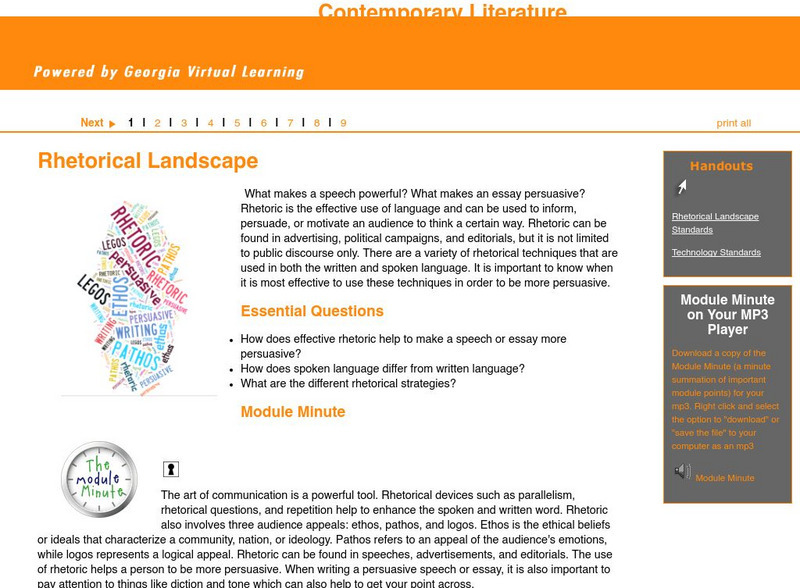
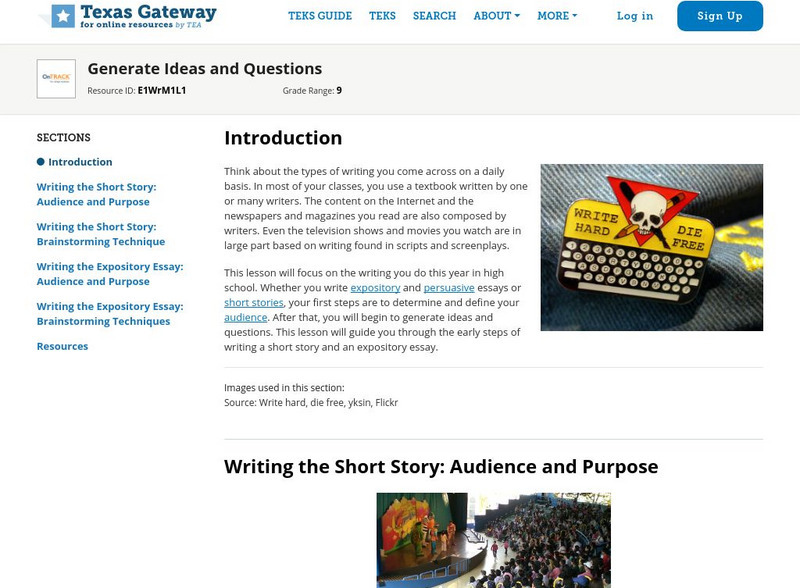



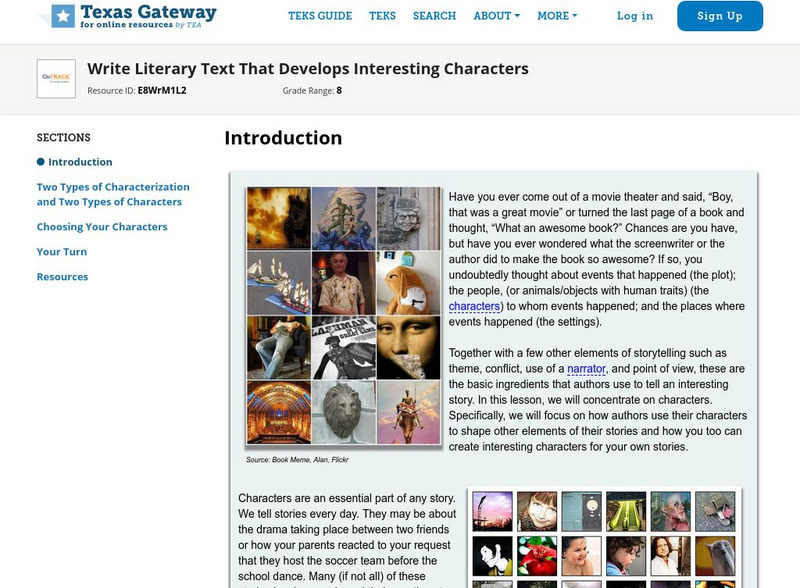
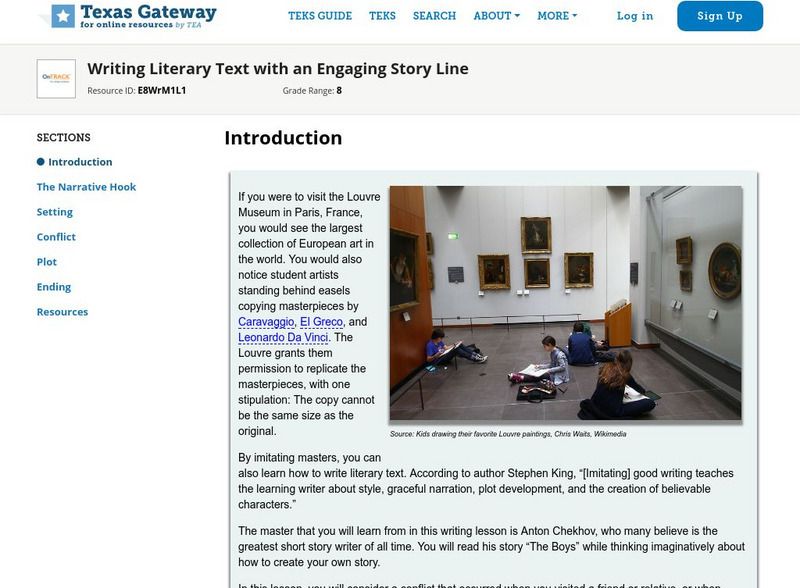









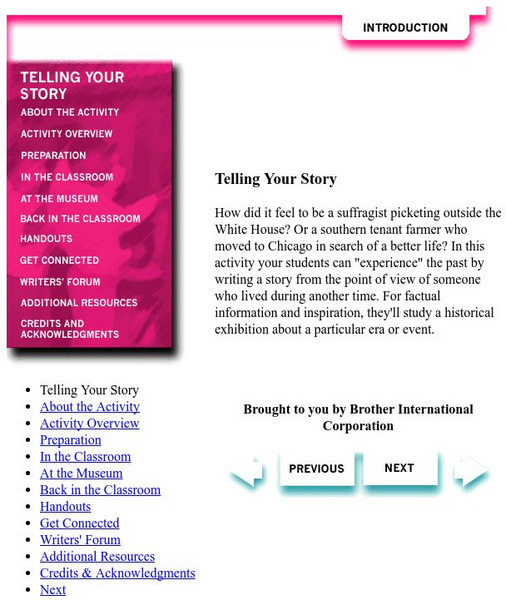

![Holt, Rinehart and Winston: Elements of Literature: Narrator Chart [Pdf] Graphic Holt, Rinehart and Winston: Elements of Literature: Narrator Chart [Pdf] Graphic](http://lessonplanet.com/content/resources/thumbnails/410058/large/bwluav9tywdpy2symdiwmduymc03nzcylxblamtwbi5qcgc.jpg?1589985144)

